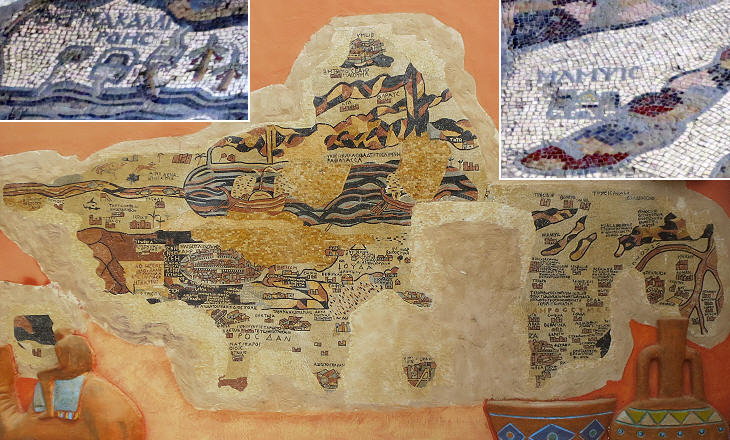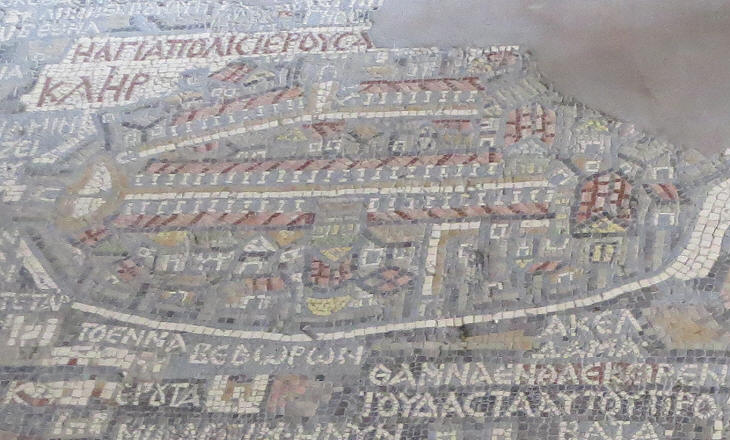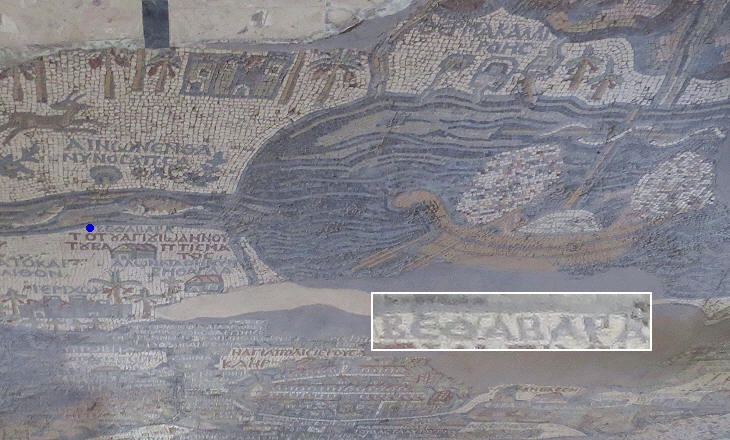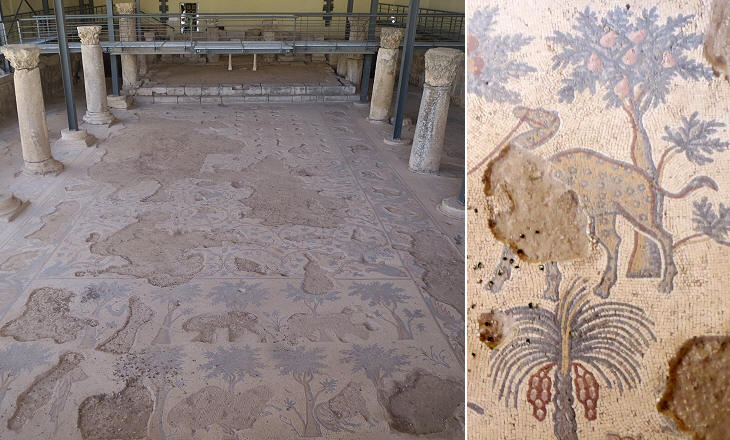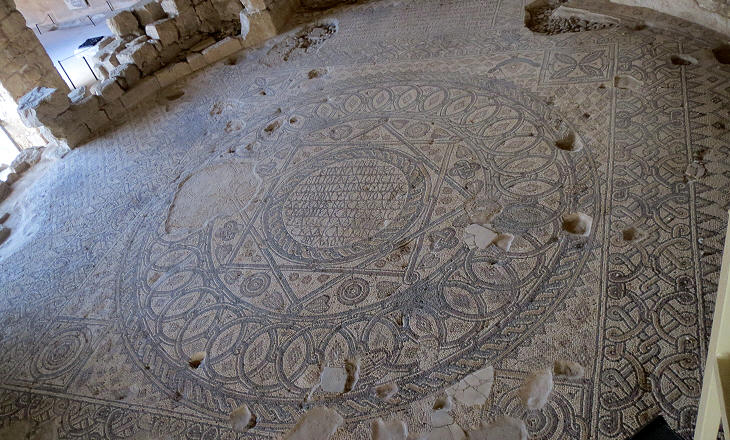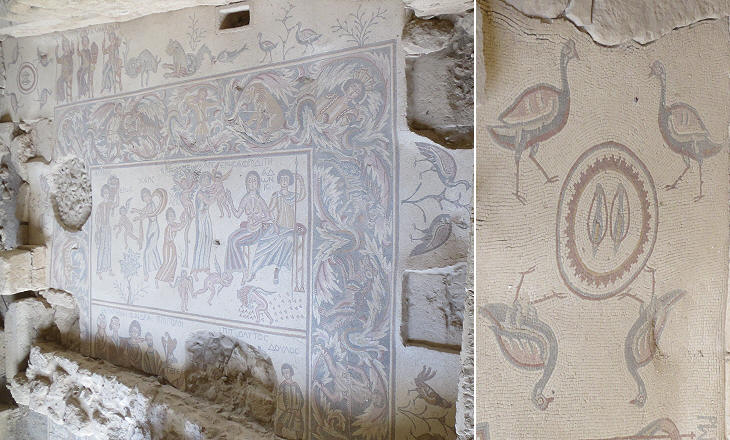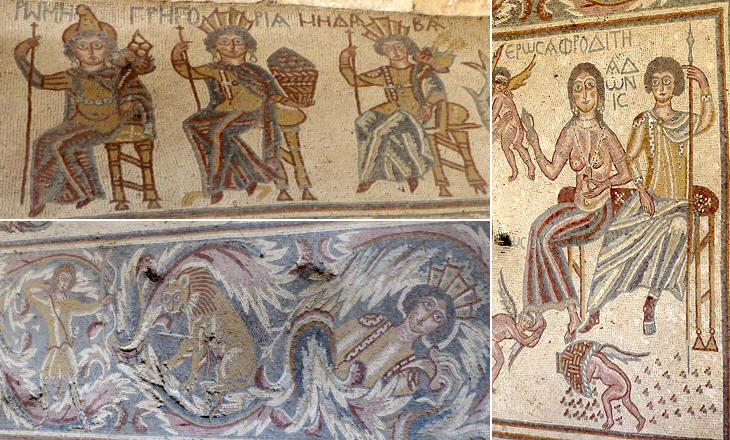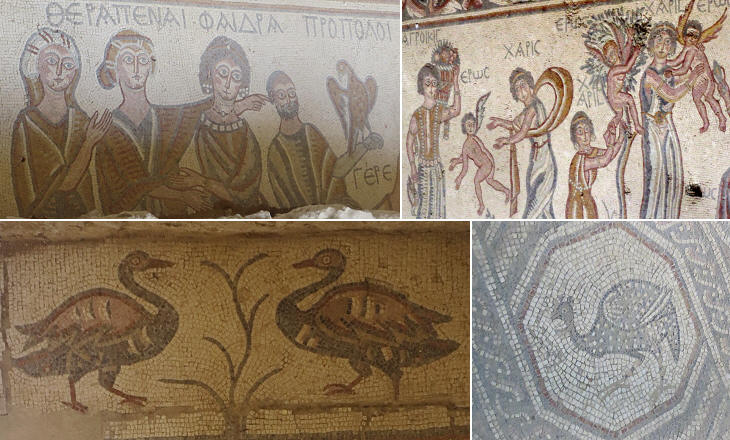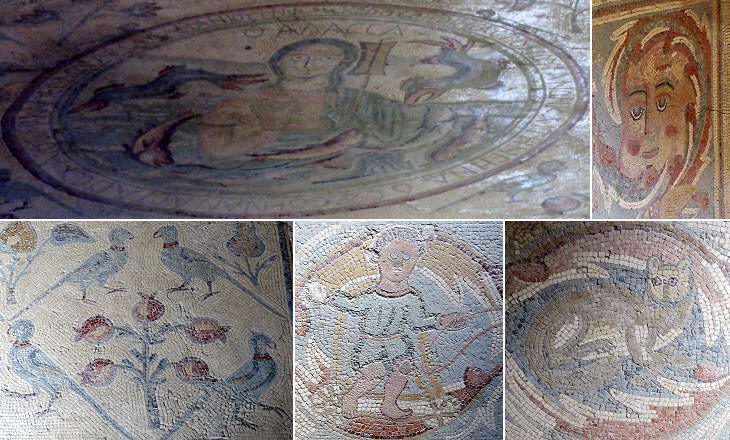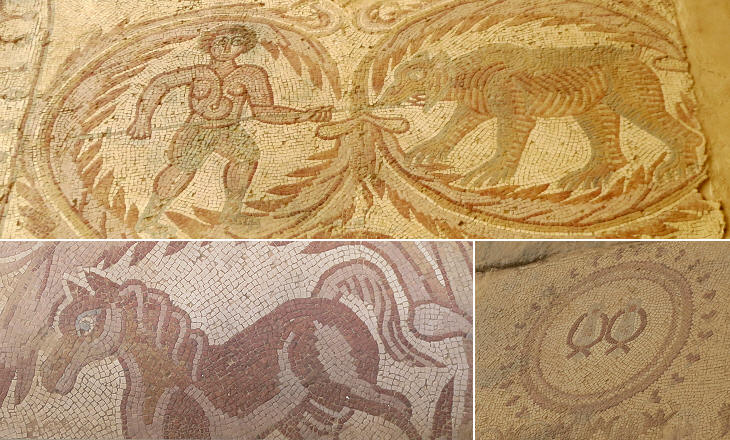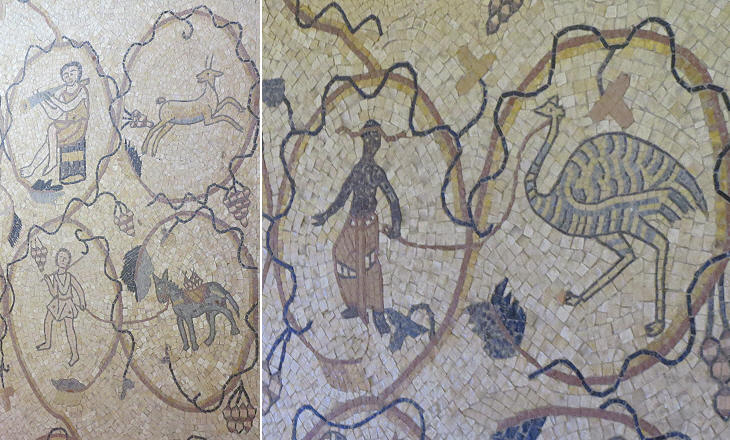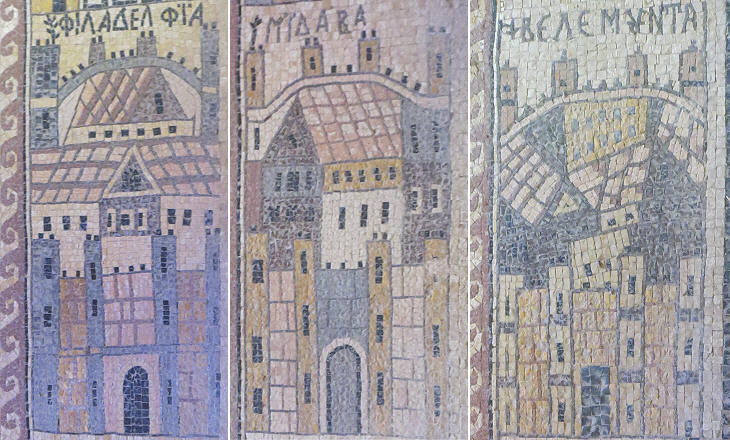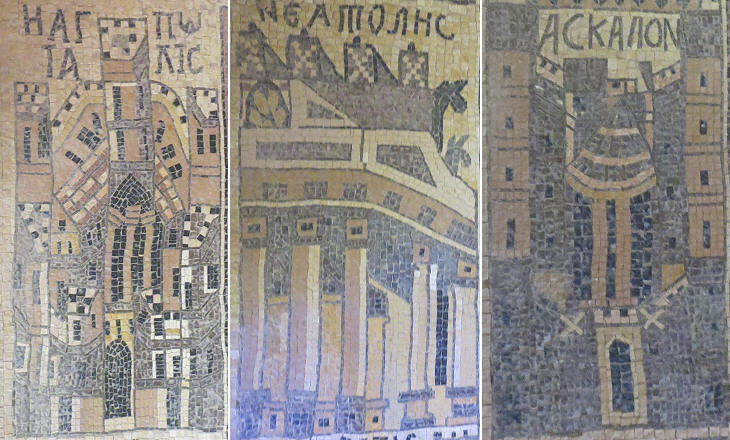  What's New! Detailed Sitemap All images © by Roberto Piperno, owner of the domain. Write to romapip@quipo.it. Text edited by Rosamie Moore. Page added in December 2013. |
 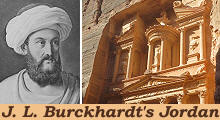 - Madaba - Madaba
(left: J. L. Burckhardt in Arab attire in a XIXth century engraving; right: the Treasury of Petra) If you came to this page directly you might wish to read an introductory page to this section first. July 13th, 1812 - In order to see Medaba, I left the great road at Hesban, and proceeded in a more eastern direction. (..) In seven hours and a half we came to the remains of a well paved ancient causeway; my guide told me that this had been formerly the route of the Hadj (the pilgrimage to Mecca), and that the pavement was made by the Mohammedans; but it appeared to me to be a Roman work. At the end of eight hours we reached Madeba, built upon a round hill; this is the ancient Medaba, but there is no river near it. It is at least half an hour in circumference; I observed many remains of the walls of private houses, constructed with blocks of silex; but not a single edifice is standing. J. L. Burckhardt - Travels in Syria and the Holy Land - 1822
Burckhardt saw only ruins when he visited Madaba. In 1880 Christians from the region of Kerak in southern Jordan settled at Madaba. In 1896 they uncovered a large mosaic by clearing away the rubble from an ancient church. It depicted a map of the Holy Land, Jordan and Lower Egypt (East is at the top of the map).
The mosaic was made in the VIth century, a period when Madaba was a flourishing town and an important bishopric see. The accurate depiction of Jerusalem has proved of great value in establishing the appearance of the Roman/Byzantine city and the location of its main streets and churches. Other towns were depicted in a more symbolic way by showing a gate or a couple of towers.
The desert and the barren hills gleam painfully in the sun, around the Dead Sea, and there is no pleasant thing or living creature upon it or about its borders to cheer the eye. It is a scorching, arid, repulsive solitude. Mark Twain - The Innocents Abroad - 1869. The map suggests that the Dead Sea was larger than it is today, that there were ships sailing on it and that animals and plants lived on its shores. The map contains references to the Old and New Testaments, e.g. the location where Jesus was baptized is indicated by the word Bethabara meaning place of crossing (of the River Jordan).
Eventually Madaba turned out to have many ancient churches with elaborate mosaics, some of which were made after the Muslim conquest of the country in the VIIth century. Some mosaics appear to have been damaged on purpose to delete images of human beings (maybe by Christian Iconoclasts). Because of the number of mosaics and of some inscriptions, archaeologists believe that there were local workshops making mosaics and this tradition has been revived in recent years.
Archaeologists have identified the pavement of Cardo Maximus, the main north-south street of ancient Madaba. In the VIth century churches were built above temples or other buildings which flanked it. The largest one housed an icon of the Virgin Mary. A large dedicatory inscription on the floor mosaic indicates that the church was restored in 757 which denotes the existence of a wealthy Christian community even after the 747 or 749 major earthquake which struck the region and caused the abandonment of many towns.
In 1982 archaeologists found out that the Church of the Virgin Mary was built incorporating some halls of a private residence of the early VIth century. The mosaic floors of this building depicted personages of the Greek myth. This is unusual considering the period when they were made.
One the two central panels portrays Hippolytus (only the name is left) and Phaedra with her maidens (see image below). He was the son of Theseus who was falsely accused by Phaedra, his stepmother, of having raped her (you may wish to see a mosaic at Paphos on Cyprus on the same subject). The other central panel shows Aphrodite and Adonis (image above) with the Three Graces playing with Cupids (image below).
Archaeologists believe that the mosaics of the Hall of Hippolytus were covered by the floor of the church only a few years after they were made. This perhaps because of the campaign launched by Emperor Justinian to completely eradicate paganism, even in private life; his decrees of 529 and 534, which were part of a large code, were zealously enforced and a mosaic such as that of the Hall of Hippolytus would have been regarded as unlawful.
The efforts by Justinian to eradicate deep-rooted traditions were not entirely successful. The large floor mosaic of Agii Apostoli was made in 578 by a local mosaicist and at its centre a medallion portrays Thalassa, a sea goddess, surrounded by sea creatures. For centuries mosaicists had depicted Neptune and other sea gods in grand panels (you may wish to see a mosaic found at Utica in Tunisia) and the Bishop of Madaba did not feel the portrait of Thalassa could do any harm to his flock. She was not an Olympian goddess, but rather a synonym for the word "sea". The design of the mosaic is very elaborate and contains some unusual features e.g. the vivid depiction of a pine marten, an animal which is extinct in Jordan.
In 1985 the mosaics of a private mansion of the VIth century were found near the Church of the Martyrs. The mosaics are dated VIth century and include hunting scenes, several isolated animals, geometric patterns and here too sandals inside a crown to mark the entrance. The building was destroyed by a fire which caused the collapse of the ceiling, an event which protected the mosaics. St. Stephen's at Umm ar-Rasas
Umm ar-Rasas is situated twenty miles south of Madaba. From inscriptions found in the ruins of its churches it has been identified with Kastron Mefaa, a military Roman camp which became a flourishing town in the VIth century. The large and elaborate floor mosaic of St. Stephen's was completed in 757. The central part of the mosaic portrays many small scenes showing a man leading an animal; rather than being enclosed in acanthus scrolls they are inserted in a loose grapevine. You can see another image of this mosaic in the introductory page.
The key feature of the mosaic is the representation of eight towns of the Holy Land and of seven Jordanian towns on the sides of the central panel. This depiction of towns is not unique to Umm ar-Rasas and Madaba, but has been found at Jerash too.
Most towns were depicted by showing their main gate and their walls, but in the case of Jerusalem and of Neapolis, archaeologists believe the main churches were depicted (the Holy Sepulchre at Jerusalem and the lost church of the Mother of God at Neapolis). Move to: Introductory Page Ajlun Castle and Pella (May 3rd, 1812) Amman and its environs (July 7th, 1812) Aqaba "Castles" in the Desert (incl. Qasr el-Azraq) Jerash (May 2nd, 1812) Mt. Nebo and the Dead Sea (July 14th, 1812) On the Road to Petra (incl. Kerak and Showbak) (July 14th - August 19th, 1812) Petra (August 22nd, 1812) Umm al-Jimal Umm Qays (May 5th, 1812)  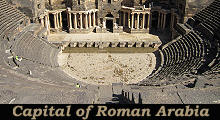 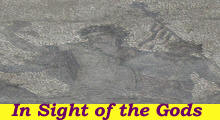 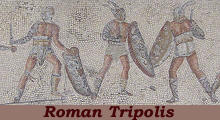
|
